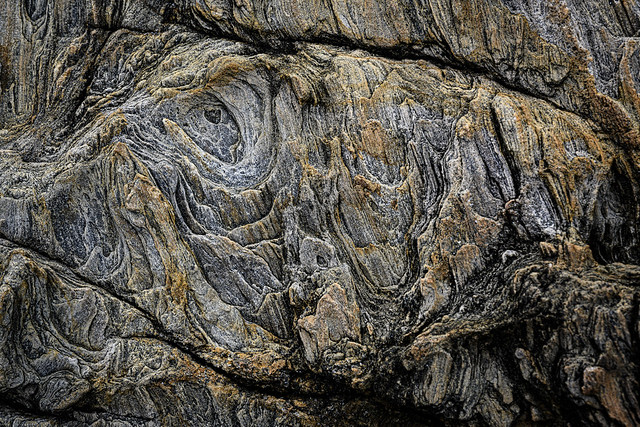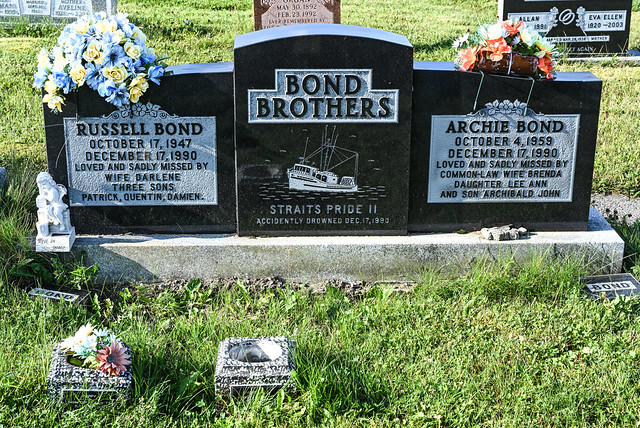
On my birthday I spent an hour or so in about 100 yards of beachfront rocks at Drift Inn, territory that I had explored before and found to be inexhaustible as a source of vibrant images—some anthropomorphic or zoomorphic, others abstract and otherwise fractured, and still others shapes and textures that hint at still-mysterious underlying order.



The geologic forces (pressure, strain, erosion) that formed what we see are merely a freeze-frame moment in processes that have taken place over vast stretches of time, and are of course continuing. The rocks of a decade or a century hence will look much the same, but a visitor tomorrow or next spring may not see the same things that I saw and photographed. Different light conditions change the view from hour to hour and day to day, and the flat light of an overcast morning discloses different figures than one sees in the raking light of a clear dawn or late afternoon, or in the mistiness of a rainy day. And angle of view and distance from rock to focal plane—and of course the framing chosen by the photographer—are other axes of variation.
Within that hundred yards (perhaps 10 yards wide) I found hundreds of tranches that spoke to me, some of them clearly faces or creatures, others only disclosing hidden creatures once the images were processed.

Stories popped out of some, while others remained mute designs.

Some were marvelously different if I rotated the image as taken, or tweaked the vibrancy and sharpness.

The question of optimal presentation of this wealth of images is vexed: large prints on paper, encouraging immersive viewing on gallery walls? Screen-filling digital still, or video? Dissolves? Ken Burns-style pans and zooms? For me, each image is first and foremost an object of contemplation into which I can fall in search of Minor White-like elseness (yes, they are pictures of rocks. But what else are they pictures of?) and Stieglitzian Equivalents (visual moments of personal discovery and epiphany) and, often enough, bits of free-hand numinosity and revelation perhaps more felt than verbalized.
Would an impartial observer visiting those hundred yards have anything like the same experience I enjoyed? To what degree was mine a prepared mind, expecting faces, equipped to see references to Chinese landscape painting

or Buddhist iconography

or similarities to any of thousands of images stored in my mind from a lifetime of looking? Just how idiosyncratic are my readings of these bits of silicacious narrative? I see gargoyles, djinni, caricatures, disembodied spirits, reminders of other worlds fictional or fantastical, allusions to particular styles and movements in art history…

The possibility of capturing and presenting tracings of the figures I see (via Apple’s promised Sidecar link between iMac and iPad) suggests a new mode of explication, but will require a deep dive into graphics software.
The whole set from Drift Inn on September 16th is available as a Flickr album.











































